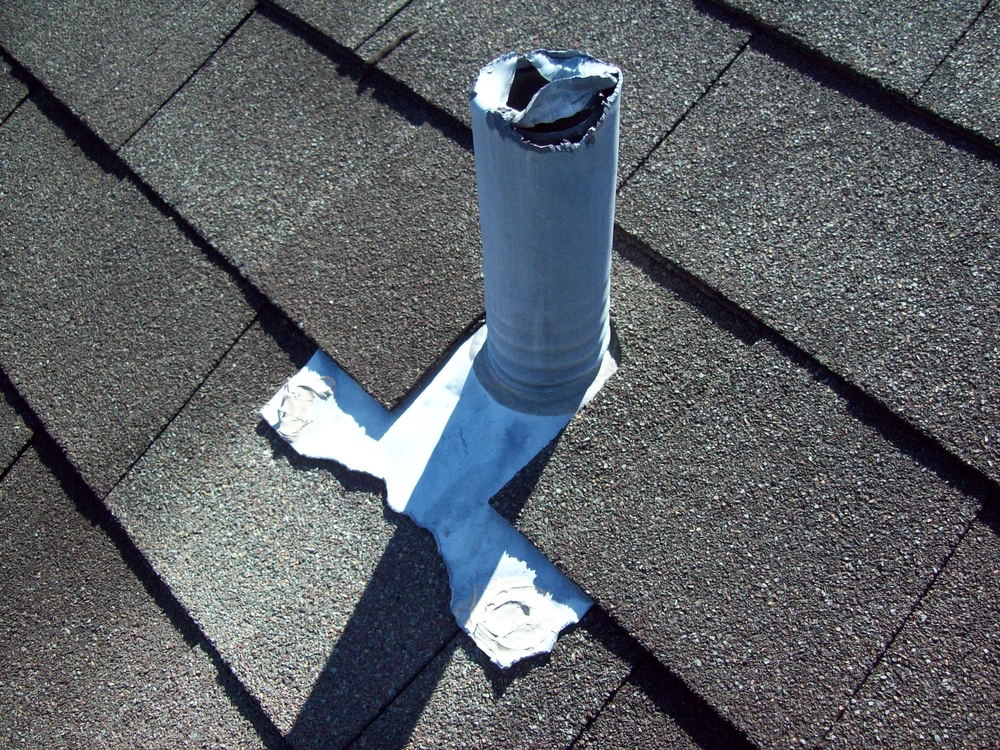Call Us
1-866-968-0479Key Takeaways:
No matter what amount of quality material, craftsmanship, and care you put into constructing your roof, problems can still arise over time. One common issue is poor ventilation, which is caused by insufficient vents, blocked vents, or the wrong vents.
The most common signs that indicate you have a ventilation issue are:
A healthy roofing system has no visible signs of moisture accumulation on the material, insulation, or rafters. If your roof is dripping water, has stains on its surface, or has mold and mildew, you likely have a ventilation issue.
In a home with a poorly ventilated roof, the air inside can become stagnant, making it difficult for the HVAC system to keep up. It means more energy is needed to maintain a comfortable temperature, resulting in higher-than-usual utility bills.
Ice dams are roofing defects that form during cold weather. They occur when warm air melts snow on the roof, and the melting water runs down to the cold eaves, refreezing and building an ice dam that can cause water to back up behind it. Poor ventilation can contribute to this problem as warm air in the attic melts snow on the roof and exacerbates ice dam formation.
Mold and mildew can accumulate in areas with inadequate ventilation or too much moisture. Poorly ventilated spaces are more likely to be affected by mold, as the stagnant air traps moisture and provides a breeding ground for these potentially harmful microorganisms. In addition to creating an unpleasant odor, mold can damage surfaces or cause respiratory health issues.
Poor ventilation can lead to the stagnation of air, which can cause unpleasant odors and smells to linger in the house. This is due to the rising humidity levels and the accumulation of dust and pest droppings.
Poor ventilation can cause the pest population to increase, as the lack of airflow prevents them from dispersing and allows them to thrive in warm and humid conditions. It can cause various problems, from structural damage to diseases spread by pests like rodents and cockroaches.
If you notice a sudden spike in pest activity, it could be due to inadequate roof ventilation.
Is the air stuffy and hot in your home? Does the temperature feel like it’s hard to control? The cause may be a lack of roof ventilation, as the hot air is trapped inside the attic and has nowhere to escape. This can make your home uncomfortable, especially during the summer, as the air inside will be significantly warmer than the outside air.
Related: 10 Roof Issues That Indicate a Failing Ventilation System
Roof vents are designed to allow air to flow in and out of the attic, which is essential for reducing humidity levels and preventing moisture issues. They are also responsible for maintaining a consistent temperature in the attic space, helping to protect the roof from weather damage. Installing suitable roof vents is essential for any roof ventilation system.
There are two main types of roof vents – static and wind-driven. Static vents are installed near the roof’s peak, providing continuous airflow. This type of vent is good for warm climates and moderate roof pitches. Wind-driven vents, on the other hand, are designed to open and close as needed. They are best for steep roofs and cold climates, where windy days can make up for still days without airflow.
If the number of vents is insufficient, it won’t allow for proper roof ventilation. The number and size of vents will vary depending on the climate, roof pitch, and type of material used for the roof. It will ensure that hot air can easily escape from the attic while allowing cold air to enter. It is crucial to have an equal balance between intake vents and exhaust vents.
Leaves, twigs, and other debris can clog up your vents, preventing air from circulating correctly. This can lead to excess heat and humidity building up in the attic, which can cause your roof to deteriorate prematurely. That’s why it is vital to regularly check your vents and clear any obstructions that you may find. Use a long-handled brush or rake to remove any debris from the vents.

If your vents are cracked, warped, or missing pieces of the frame or louvers, then they need to be replaced. Inspect your roof and closely examine the seal around the vent’s neck to ensure it is securely seated. If any of these components are damaged, you should replace the vent with a new one designed for your roof.
If you reside in North Olmsted, OH, contact Absolute Roofing and Construction, Inc. for all your roofing needs. Our experts can assess the condition of your roof and suggest the best solutions. We provide comprehensive roofing services, including installation, repair, and maintenance. We are a proud Owens Corning Platinum Preferred Contractor, meaning you can trust us to deliver quality results!
Need we say more? Let us help you keep your roof in top shape and your home safe. Contact us today and get a free estimate for your roofing needs.